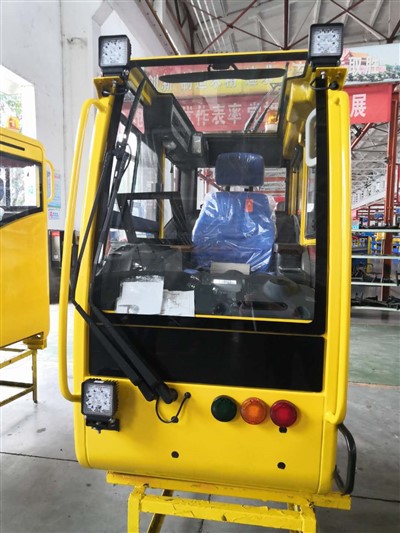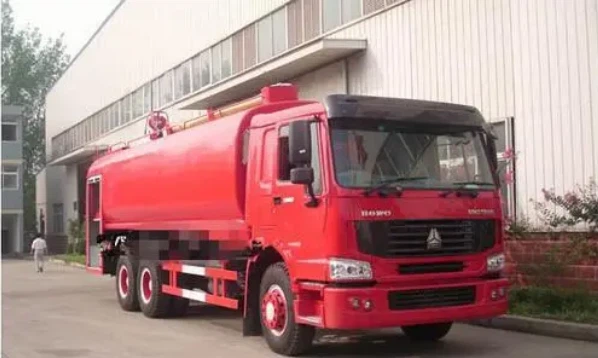Essential Guide to Garbage Compactor Parts for Efficient Waste Management

Introduction
Garbage compactors are essential appliances in both residential and commercial settings, designed to reduce waste volume and contribute to efficient waste management. Understanding the various garbage compactor parts and their functions can help users maintain their appliances, ensure proper operation, and extend the lifespan of the equipment. This comprehensive guide will delve into the different parts of garbage compactors, their significance, maintenance tips, common issues, and much more.
What is a Garbage Compactor?
A garbage compactor is a machine that compresses waste materials to minimize their volume. This device is ideal for homes, restaurants, and businesses, as it allows for more efficient storage and disposal of waste. The compacting mechanism not only helps in saving space but also enhances safety by reducing the mess associated with overflowing waste bins.
Understanding Garbage Compactor Parts
1. The Frame and Cabinet
The frame and cabinet form the structural backbone of a garbage compactor. Typically made of durable materials such as stainless steel or heavy-duty plastic, they provide support and protection for internal components. A sturdy frame is crucial for the operation’s stability, ensuring that the compactor remains secure during use.

2. The Compaction Plate
The compaction plate is the heart of the garbage compactor. It applies significant pressure to the waste material, reducing its volume. Designed to withstand extreme force, the compaction plate comes in various sizes and shapes, depending on the model.
3. The Motor
The motor powers the compaction plate, and its efficiency directly affects the compacting process. Different models may feature single or dual motors for added power. Regular maintenance, including lubrication and cleaning, can help extend the motor’s life.
4. The Control Panel
The control panel allows users to operate the compactor easily. It typically features buttons for starting, stopping, and setting operational modes. Advanced models may include safety features and diagnostic displays to alert users of potential issues.
5. The Feed Opening and Door
The feed opening is where waste is loaded into the compactor. It is usually equipped with an access door that allows for easy loading and unloading. Some models have a locking mechanism to ensure safety when the compactor is in operation.
6. Safety Features
Garbage compactors often come with various safety features to prevent accidents. These may include safety switches, automatic shut-off mechanisms, and interlock systems to ensure that the door is securely closed before operation begins.
Common Garbage Compactor Parts and Their Functions
1. Hydraulic System
The hydraulic system is crucial for compactors that employ hydraulic power to compress waste. This system consists of hydraulic lines, valves, and cylinders that work together to provide the necessary force. Regular inspection of hydraulic fluid levels and leaks is essential for optimal performance.
2. Waste Container
The waste container collects the compacted materials. It must have sufficient capacity to handle the amount of waste produced. Many models feature liners that make cleaning easier and help prevent odors.
3. Compressor Piston
The compressor piston is responsible for pushing the compaction plate down. It must be made of high-strength materials to resist wear and tear over time. Regular inspection and replacement may be required, especially in high-volume applications.
4. Sensors and Alarms
Modern garbage compactors often include sensors that monitor various aspects, such as load capacity and motor temperature. Alarms may trigger if abnormalities are detected, helping to prevent damage and ensuring safe operation.
Maintenance of Garbage Compactor Parts
Regular maintenance is crucial for ensuring the longevity and performance of garbage compactors. Here are some tips to keep your compactor in top condition:
1. Cleaning the Compactor
Perform routine cleaning of the compaction chamber and waste container to prevent the buildup of debris and odors. Use a mixture of water and mild detergent to clean surfaces, avoiding harsh chemicals that could damage components.
2. Checking Fluid Levels
For hydraulic models, regularly check the hydraulic fluid levels. Top up as needed and inspect for leaks that could hinder operation.
3. Inspecting Electrical Connections
Periodically inspect all electrical connections and cords for wear and damage. Ensure that the control panel is functioning correctly and consider having a professional electrician check complex electrical issues.
4. Testing Safety Features
Consistently test safety features to ensure they are operational. This includes the emergency stop button, interlock systems, and alarms. Regular tests can help prevent safety hazards.
5. Monitoring Parts Wear
Keep an eye on common wear points like the compaction plate, compressor piston, and any belts or pulleys. Replace worn parts promptly to maintain efficiency and prevent further damage.
Common Issues with Garbage Compactor Parts
1. Motor Failure
Motor failure can occur due to overheating or electrical issues. Regular maintenance, including cleaning and lubrication, can help avoid this problem.
2. Compaction Plate Jamming
Jam issues often happen when large or inappropriate items are loaded into the compactor. Regularly check for blockages and ensure users are aware of acceptable materials for loading.
3. Leaks in the Hydraulic System
Hydraulic leaks can lead to reduced compaction and potential failure. Always inspect hydraulic lines and components for wear and replace them as necessary.
4. Door Malfunctions
If the door fails to close or lock, the compactor may not operate safely. Regularly inspect door mechanisms and lubricate hinges to ensure smooth operation.
Examples of Garbage Compactor Parts Available in the Market

| Part Name | Description | Typical Brands |
|---|---|---|
| Compaction Plate | Replaces worn compaction plates for enhanced performance. | Kohler, Wastequip |
| Hydraulic Pump | Essential for hydraulic systems; ensures effective compression. | Garbage Master, InSinkErator |
| Motor Assembly | Replaces defective motors for improved efficiency. | American Compaction, Compactor Co. |
| Control Panel | User interface for operating the compactor, often includes safety features. | BoostCompactors, RotoCon |
Practical Tips for Choosing and Replacing Garbage Compactor Parts
1. Identify the Right Parts
Before attempting replacements, identify specific parts that are worn or broken. Checking the manufacturer’s manual is advisable to ensure compatibility with your compactor model.
2. Buy Quality Parts

Invest in high-quality parts from reputable suppliers to ensure long-term reliability. Generic parts may be cheaper but often lack the durability required.
3. Follow Manufacturer Instructions
When replacing parts, follow the manufacturer’s instructions closely. Neglecting to do so could result in improper installation, leading to further issues.
4. Seek Professional Help
If unsure about part replacement, consider hiring professionals. This approach can save time and prevent potential mishaps.
Frequently Asked Questions (FAQ)
1. What is the lifespan of a garbage compactor?
The lifespan of a garbage compactor can vary widely, but with proper maintenance, they typically last anywhere from 10 to 15 years.
2. Can I compact all types of waste?
Not all types of waste should be compacted. Avoid compacting hazardous materials, construction debris, and large items that can damage the machine.
3. How often should I perform maintenance on my garbage compactor?
It is recommended to perform basic maintenance every month, with more thorough inspections conducted at least twice a year.
4. Is it cost-effective to use a garbage compactor?
Yes, using a garbage compactor can save money on waste disposal costs by reducing the frequency of pickups and optimizing storage space.
5. What should I do if my garbage compactor is not working?
First, check the power supply, then the safety features. If issues persist, consult the user manual or a professional technician for troubleshooting.
6. How do I safely dispose of compacted waste?
Always check local regulations regarding waste disposal. Bag the compacted waste and ensure it is securely placed in an appropriate waste bin for collection.
